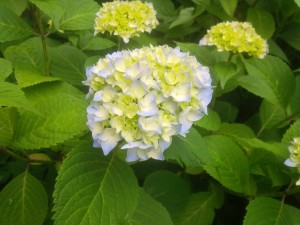 There are some tunes that stick in your head, sometimes for weeks. That happened to me recently with the old sea chantey, “What do we do with a drunken sailor?” The song isn’t as common as it was a generation or two ago, possibly owing to its bawdy lyrics, but is still widely known. The first verse goes as follows,
There are some tunes that stick in your head, sometimes for weeks. That happened to me recently with the old sea chantey, “What do we do with a drunken sailor?” The song isn’t as common as it was a generation or two ago, possibly owing to its bawdy lyrics, but is still widely known. The first verse goes as follows,
“What do we do with a drunken sailor?
What do we do with a drunken sailor?
What do we do with a drunken sailor?
Early in the morning!
The refrain, which punctuates the numerous verses, is
“Way hey and up she rises
Way hey and up she rises
Way hey and up she rises
Early in the morning!”
The song was coursing through my brain last weekend when I was out in the garden and facing an annual chore that I never relish—pruning the three big blue hydrangeas along the boundary fence.
I love the blue hydrangeas, which are the old fashioned, “mophead” variety, ‘Nikko Blue’. They were also my late husband’s favorite. In early summer, when the shrubs adorn themselves with scores of sky-blue flowerheads, they are glorious. They are much less alluring in spring, when they are bristling with dead wood and the remnants of last year’s blossoms. To start the hydrangeas’ metamorphosis from pitiful to beautiful, you have to do spring pruning.
As I was applying my loppers to the first shrub, it occurred to me that “What do we do with a drunken sailor” has the same number of syllables as “What do you do with a blue hydrangea?” The old sea chantey transformed itself into a horticultural anthem:“What do you do with a blue hydrangea?
What do you do with a blue hydrangea?
What do you do with a blue hydrangea?
Early in the springtime!
Way, hey and up it rises,
Way hey and up it rises,
Way hey and up it rises,
Early in the springtime
The syllables worked and so did I, lopping away with a much lighter heart. As I grabbed the dead wood out of the plants’ centers and lopped it off, a second verse formed in my mind, starting with, “Trim dead wood with a trusty lopper.” This made the dead wood procedure go much faster.
‘Nikko Blue’ hydrangeas bloom on “old” wood, meaning that the previous season’s growth produces the current season’s flowers. If you trim off the nascent buds on an old-fashioned hydrangea in the spring, you will eliminate blooms for the year. Another verse formed in my mind—“Watch for buds as you cut the branches”.
Singing that as I went about the task may have annoyed the neighbors who were setting up for a barbecue on the other side of the fence, but it reminded me of that crucial hydrangea caveat. I was helped by the fact that right now it is easy to tell the fresh green buds from the old dead wood and last fall’s desiccated flower remnants.
After the three hydrangeas were pruned and cleaned up, it was time to rake away the winter debris that covered the ground around them. Another verse came to mind—“Rake the base to remove detritus”. I had to repeat the new verse numerous times before all of that detritus was gone, but the job went faster because of it.
Spring gardening also means renewing mulch applications. Once the ground around my hydrangeas was clear, it was time to lug the many bags of cedar mulch necessary to cover the area around the bases of the plants. I like cedar because it smells wonderful, degrades slowly and deters both weeds and pests. I don’t particularly like lugging the bags, but in the absence of burly helpers, the chore falls to me. I made it easier with one last verse—“Mulch the ground with a coat of wood chips”.
The best part of any onerous gardening chore is relaxing once it is finished. Lugging the bags of mulch made it necessary to do that relaxing with a heating pad on my back. As the ache abated, I adapted the last verse of “What do we do with a drunken sailor” to suit the occasion.
“That’s what you do with a blue hydrangea!
That’s what you do with a blue hydrangea!
That’s what you do with a blue hydrangea!
Early in the springtime!”
